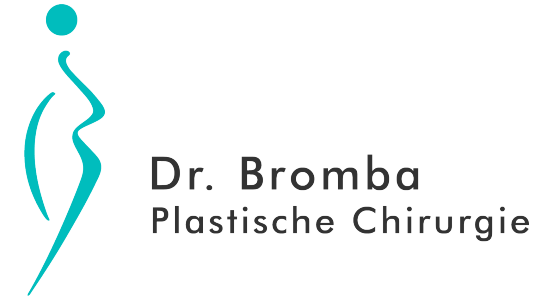Breast construction following breast cancer
A mastectomy for breast cancer represents a drastic change for a woman. Quite apart from the seriousness of the disease, women are subject to a psychological burden in the feeling that they are no longer a ‘complete woman’. So as to make it easier for such patients to return to normal life, plastic reconstructive surgery has developed new methods of breast reconstruction. For younger women affected by breast cancer above all, a successful breast construction is a very important step in the healing process. After a breast reconstruction the breast has a quite natural appearance. Women have no problem about taking part in any activities, including swimming and sports. In many cases the plastic surgery of today recommends breast reconstruction using the body’s own tissue. It may make sense to combine this operation with an implant. Dr Bromba in Essen, Germany, uses the most modern methods of breast construction after breast cancer. Above all, breast reconstruction using the body’s own tissue represents the ideal course for many women today. The method will be selected in close consultation with the patient. The breast reconstruction chosen will also depend on the general physical situation of the woman and on the further course of treatment.
Breast reconstruction with the body’s own tissue
In breast construction using the body’s own tissue, the plastic surgeon takes muscle, fatty and skin tissue from the back or abdomen, and uses this to form a new breast. Thanks to microsurgery, these operations are less invasive and more reliable than they were just a few years ago. Microsurgery ensures that the tissue flaps receive adequate nourishment by connecting the vessels of the flap to the vessels in the implant area.
Three different methods may be used for breast construction with the body’s own tissue:
- Removal of tissue from the back (latissimus dorsi)
- Removal of a flap from the lower abdomen (DIEP flap)
- Removal of tissue from the muscles of the abdomen (TRAM flap)
Removal of tissue from the back (latissimus dorsi)
Breast construction with tissue taken from the back is a method that has proved very effective. The missing breast is reconstructed with flaps taken from the latissimus dorsi. The dorsal muscle (musculus latissimus dorsi = the broadest back muscle) is transposed forward to the region of the breast. This method of breast construction has proved particularly valuable following a radical mastectomy (complete removal of the breast).
Removal of a flap from the lower abdomen (DIEP flap)
An equally reliable method of breast reconstruction using the body/s own tissue is based on DIEP flaps (DIEP = Deep Inferior Epigastric Perforator). This method involves the transposition of tissue from the lower abdomen to the breast region, based on microvascular connections. The plastic surgeon then shapes the flap into the a normal breast form.
Removal of tissue from the abdominal muscles (TRAM flap)
Breast construction using the body’s own tissue can also be achieved using a flap taken from the muscles of the abdomen. This method involves taking tissue of the lower abdomen from a part of the abdominal muscle, and transposing it to the region of the breast. The plastic surgeon then shapes the flap so that it looks like a normal breast.
Reconstruction of the nipple
The reconstructed breast likewise needs to have a nipple that is convincingly close to nature. The new nipple can only be realised after the healing process has been completed. A bit of skin is taken from another part of the body (generally from the inside upper leg), placed on the reconstructed breast and then tattooed over a number of sessions. The tattooing is carried out on an outpatient visit, and performed under local anaesthetic.

